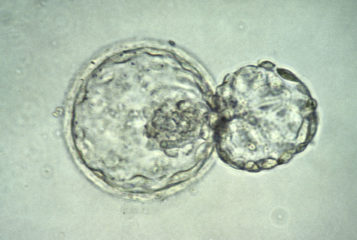The three-dimensional (3D) structure of the human endometrium (uterus lining) has been discovered, which could lead to greater insights into infertility, embryo implantation, and endometrium-related diseases.
Researchers from Niigata University, Japan, used 3D tissue-clearing imaging to explore the endometrial structure in greater depth. The researchers were able to obtain 3D full thickness images of the human uterine endometrium several centimetres deep, and in doing so, they discovered unique structures that had not previously been seen with two-dimensional (2D) imaging.
Lead investigator, Professor Takayuki Enomoto, said 'Our 3D imaging established the baseline for the 3D structure of human endometrial glands and adenomyotic lesions. These findings dynamically change the concept of human uterine endometrium.'
Published in iScience, the researchers detailed their use of a combined imaging and computational analysis protocol, which made the tissue samples transparent, also known as tissue clearing. This made the sample easier to analyse, with the ease of use computational protocol allowing for safety, speed and effectiveness in clearing the human tissues.
The endometrium is a complex structure that plays a crucial role in the implantation of fertilised eggs yet, for decades, only 2D images were available. This lack of complete imaging led to gaps in the understanding of endometrial regeneration during menstruation. 3D imaging has revealed characteristic structural features of the human endometrial glands, which were not completely observed by 2D imaging alone.
The 3D analysis clarified that human endometrial glands formed a complex plexus network, referred to as the 'rhizome' structure, which expanded horizontally along the muscular layer. Furthermore, these structural features were detected in all samples, regardless of age or menstrual cycle phase, suggesting that they are basic components of the normal human endometrium.
The 2D shape of the endometrial gland has been described since the early 1900s. However, these new 3D images of endometrial glands suggest that this conventional 2D shape does not reflect their true structure. On the basis of their 3D observation, the researchers have provided a new 2D shape of the human endometrial glands, which is a first in nearly 100 years.
Previously the researchers had conducted genomic analysis to discover the origins of endometriosis, publishing their findings in 2018. They discovered that the genes most often mutated in endometriosis-associated ovarian cancers were also frequently mutated in endometriotic epithelium, and, surprisingly, in normal uterine endometrial glands. Hence, establishing the 3D structure of normal uterine endometrium is vital in the continuations of this study.
One limitation of the current study is that the endometrium samples used were obtained from patients who underwent hysterectomy, and thus were all from women over the age of 29. Regardless, Professor Enomoto concluded: 'The 3D representation of the human endometrium will lead to a better understanding of the human endometrium in various fields, including histology, pathology, pathophysiology, reproduction and oncology.'






Leave a Reply
You must be logged in to post a comment.